Abstract
Israel (1978) evaluated and discussed research on positive and negative verbal-nonverbal correspondence. In the present report we attempt to delineate the relationship of correspondence training to two major intervention goals—producing (increasing) behavior and inhibiting (decreasing) behavior. The concepts of noncorrespondence and generalized positive correspondence are introduced. Past research relating to the correspondence analyses offered for the two intervention outcomes and possibilities for future research are discussed. The relationship of verbal correspondence training to the issues of response maintenance and response generalization is also examined.
Keywords: verbal-nonverbal correspondence, positive correspondence, negative correspondence, facilitating behavior, inhibiting behavior, self-instruction
Full text
PDF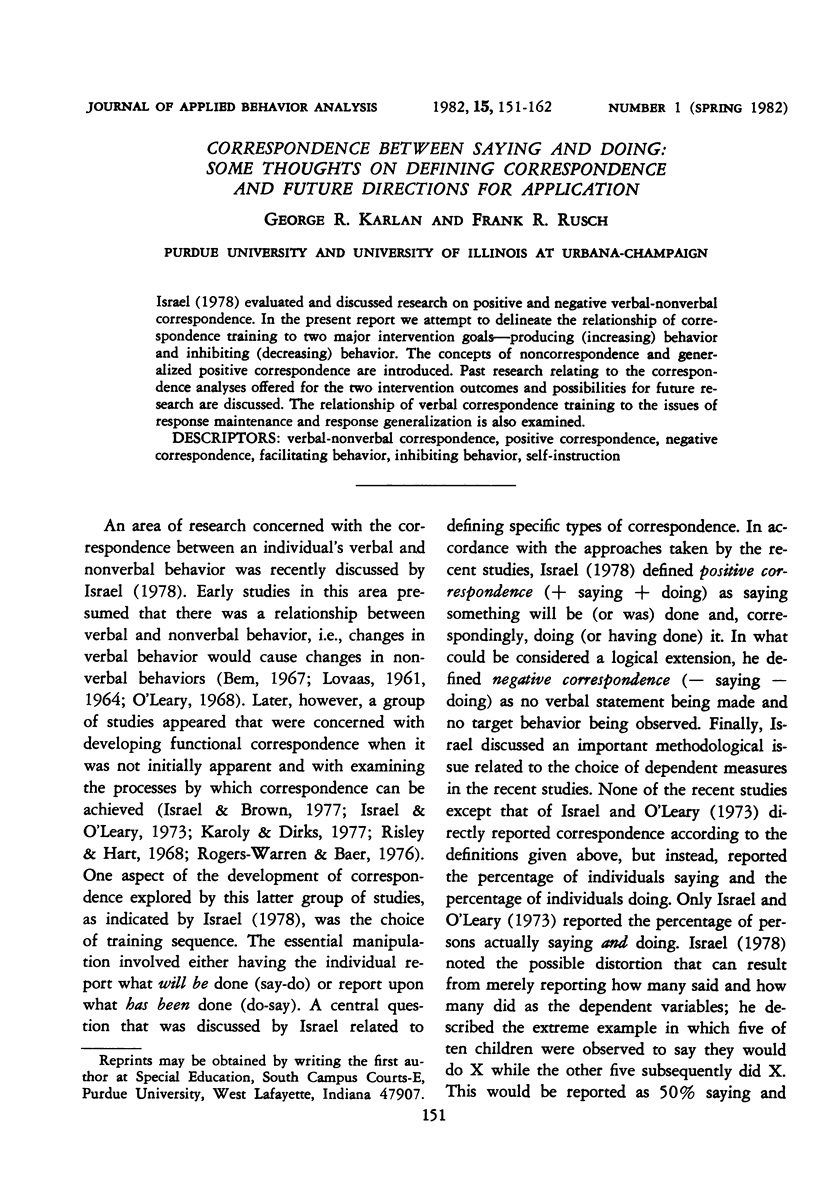
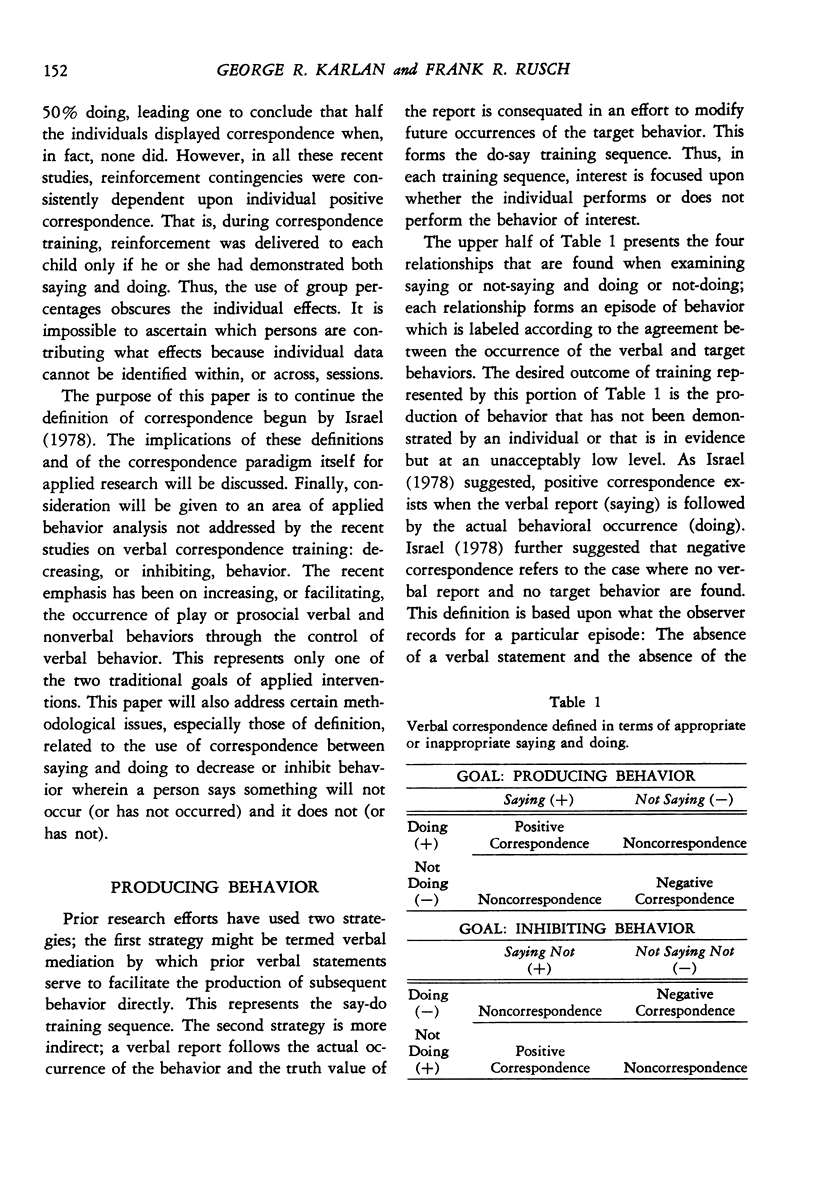
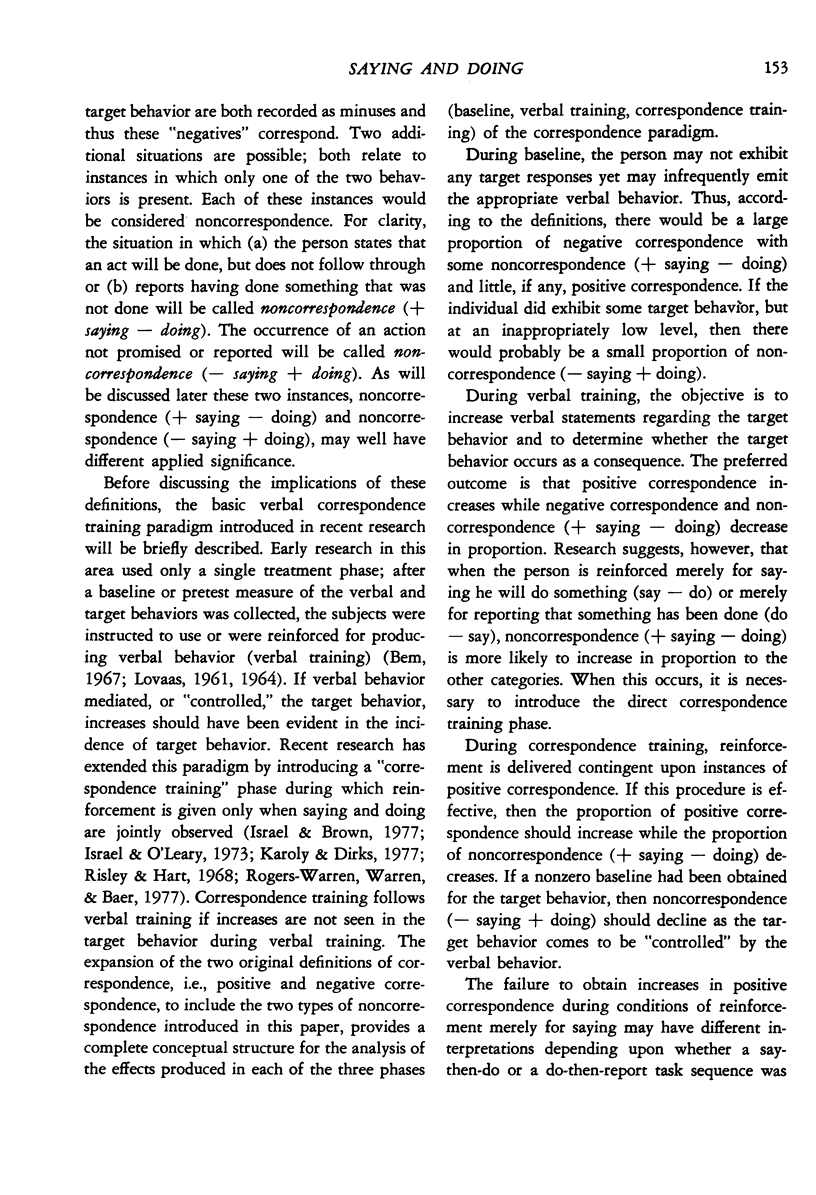

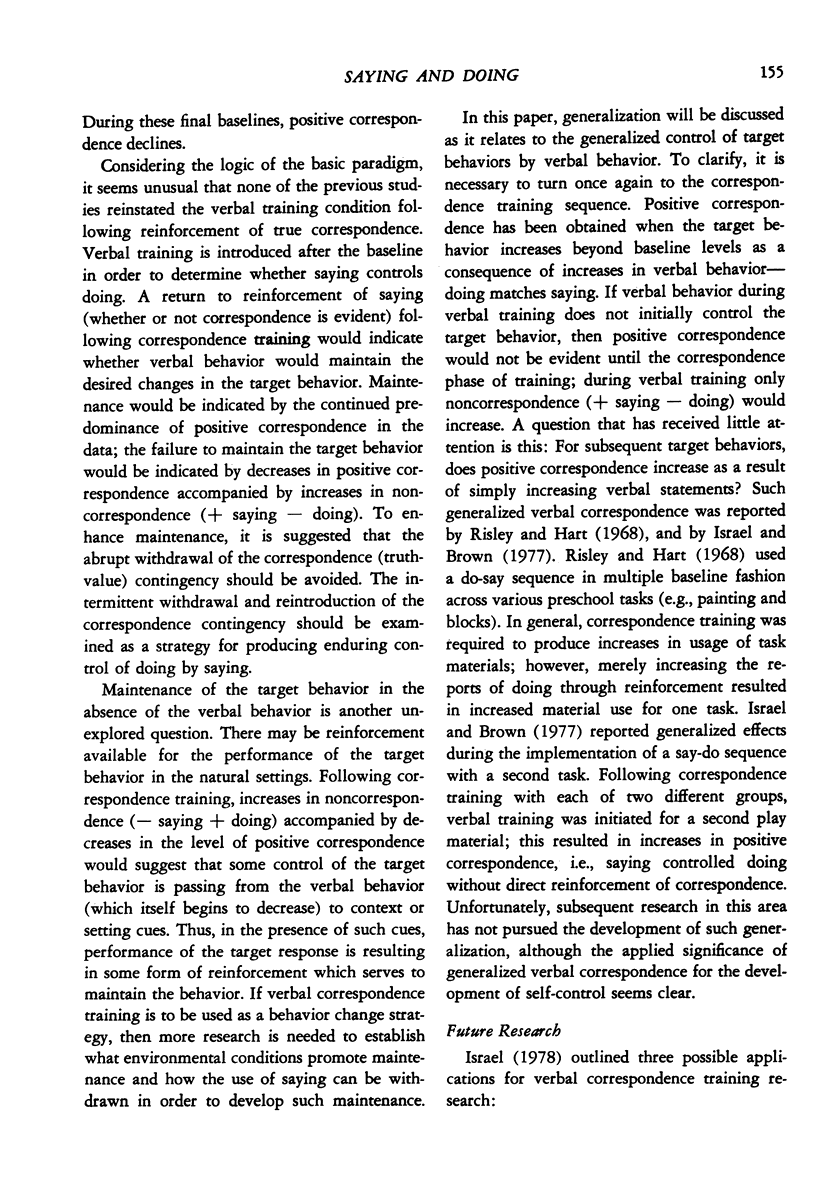
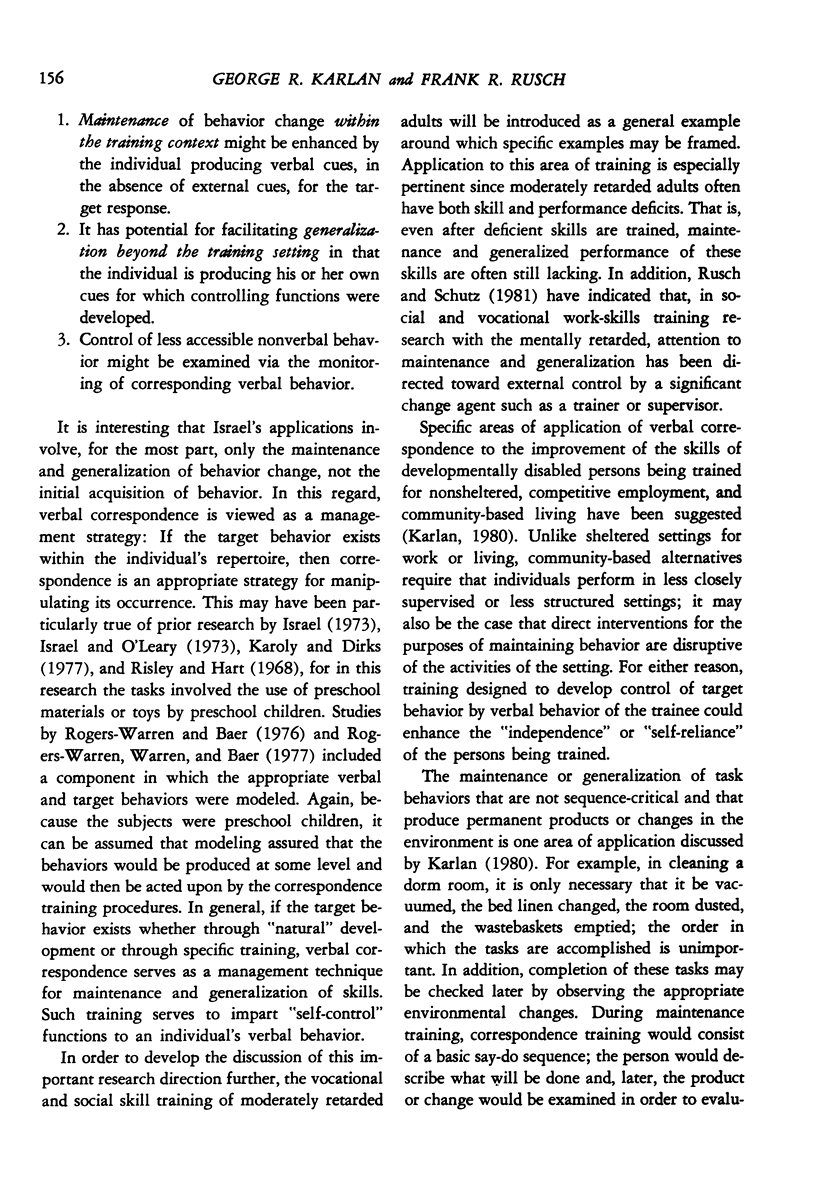

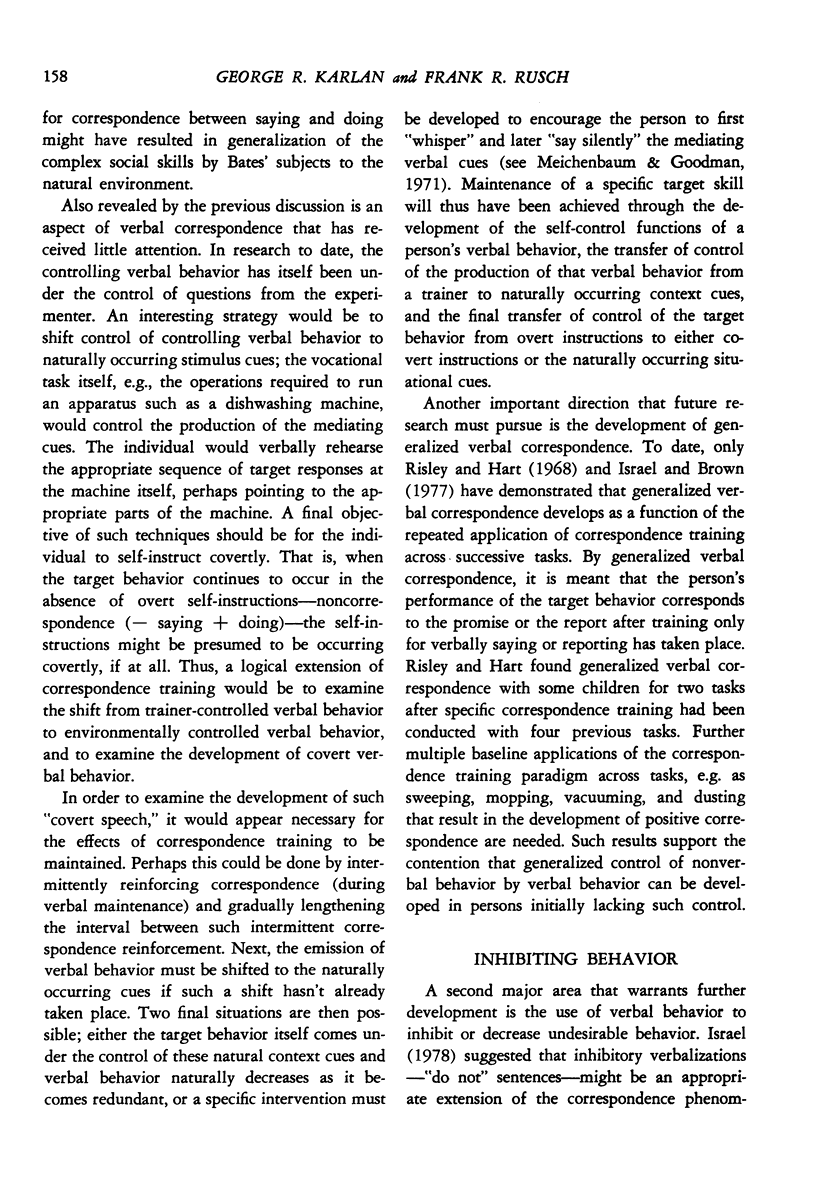
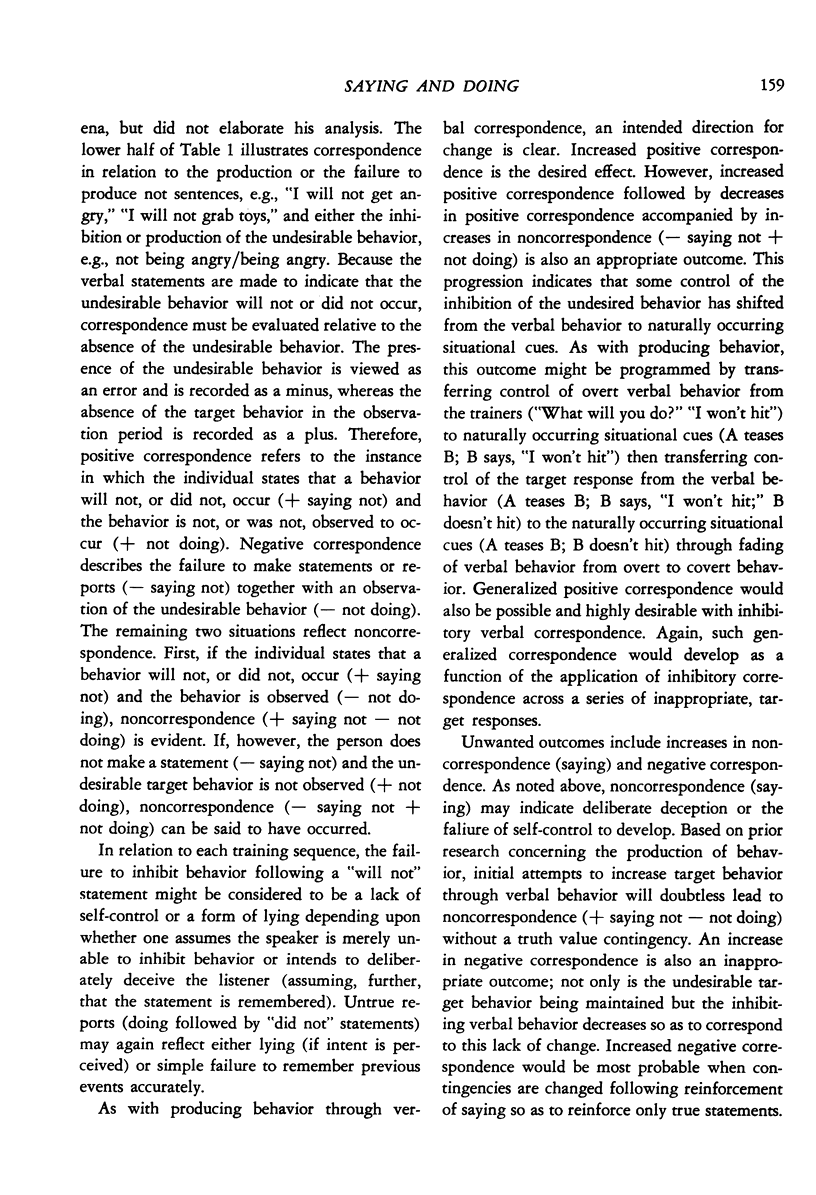


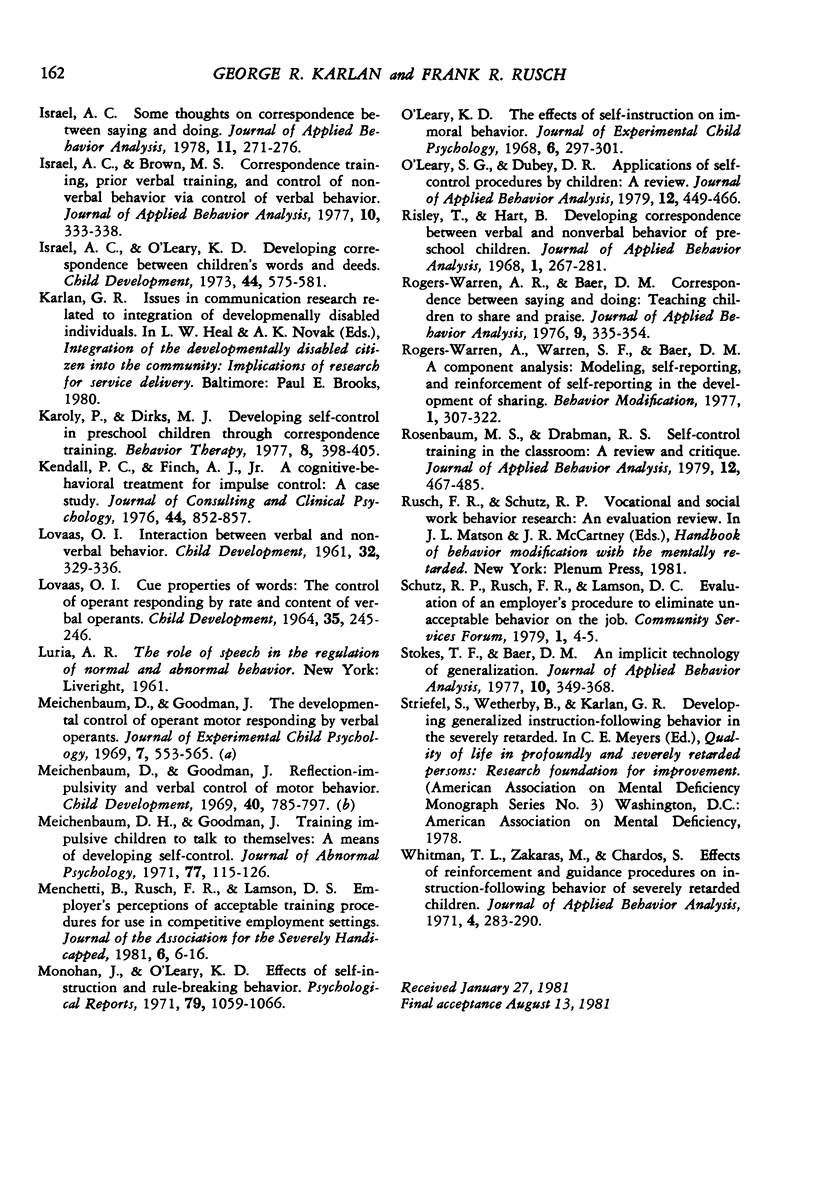
Selected References
These references are in PubMed. This may not be the complete list of references from this article.
- Bates P. The effectiveness of interpersonal skills training on the social skill acquisition of moderately and mildly retarded adults. J Appl Behav Anal. 1980 Summer;13(2):237–248. doi: 10.1901/jaba.1980.13-237. [DOI] [PMC free article] [PubMed] [Google Scholar]
- Bem S. L. Verbal self-control: the establishment of effective self-instruction. J Exp Psychol. 1967 Aug;74(4):485–491. doi: 10.1037/h0024822. [DOI] [PubMed] [Google Scholar]
- Bornstein P. H., Quevillon R. P. The effects of a self-instructional package on overactive preschool boys. J Appl Behav Anal. 1976 Summer;9(2):179–188. doi: 10.1901/jaba.1976.9-179. [DOI] [PMC free article] [PubMed] [Google Scholar]
- Israel A. C., Brown M. S. Correspondence training, prior verbal training, and control of nonverbal behavior via control of verbal behavior. J Appl Behav Anal. 1977 Summer;10(2):333–338. doi: 10.1901/jaba.1977.10-333. [DOI] [PMC free article] [PubMed] [Google Scholar]
- Israel A. C. Some thoughts on correspondence between saying and doing. J Appl Behav Anal. 1978 Summer;11(2):271–276. doi: 10.1901/jaba.1978.11-271. [DOI] [PMC free article] [PubMed] [Google Scholar]
- Kendall P. C., Finch A. J., Jr A cognitive-behavioral treatment for impulse control: a case study. J Consult Clin Psychol. 1976 Oct;44(5):852–857. [PubMed] [Google Scholar]
- LOVAAS O. I. CUE PROPERTIES OF WORDS: THE CONTROL OF OPERANT RESPONDING BY RATE AND CONTENT OF VERBAL OPERANTS. Child Dev. 1964 Mar;35:245–256. doi: 10.1111/j.1467-8624.1964.tb05934.x. [DOI] [PubMed] [Google Scholar]
- LOVAAS O. I. Interaction between verbal and nonverbal behavior. Child Dev. 1961 Jun;32:329–336. doi: 10.1111/j.1467-8624.1961.tb05031.x. [DOI] [PubMed] [Google Scholar]
- Meichenbaum D. H., Goodman J. Training impulsive children to talk to themselves: a means of developing self-control. J Abnorm Psychol. 1971 Apr;77(2):115–126. doi: 10.1037/h0030773. [DOI] [PubMed] [Google Scholar]
- Meichenbaum D., Goodman J. Reflection-impulsivity and verbal control of motor behavior. Child Dev. 1969 Sep;40(3):785–797. doi: 10.1111/j.1467-8624.1969.tb04541.x. [DOI] [PubMed] [Google Scholar]
- Meichenbaum D., Goodman J. The developmental control of operant motor responding by verbal operants. J Exp Child Psychol. 1969 Jun;7(3):553–565. doi: 10.1016/0022-0965(69)90016-2. [DOI] [PubMed] [Google Scholar]
- Monahan J., O'Leary K. D. Effects of self-instruction on rule-breaking behavior. Psychol Rep. 1971 Dec;29(3):1059–1066. doi: 10.2466/pr0.1971.29.3f.1059. [DOI] [PubMed] [Google Scholar]
- O'Leary K. D. The effects of self-instruction on immoral behavior. J Exp Child Psychol. 1968 Jun;6(2):297–301. doi: 10.1016/0022-0965(68)90092-1. [DOI] [PubMed] [Google Scholar]
- O'Leary S. G., Dubey D. R. Applications of self-control procedures by children: a review. J Appl Behav Anal. 1979 Fall;12(3):449–465. doi: 10.1901/jaba.1979.12-449. [DOI] [PMC free article] [PubMed] [Google Scholar]
- Risley T. R., Hart B. Developing correspondence between the non-verbal and verbal behavior of preschool children. J Appl Behav Anal. 1968 Winter;1(4):267–281. doi: 10.1901/jaba.1968.1-267. [DOI] [PMC free article] [PubMed] [Google Scholar]
- Rogers-Warren A., Baer D. M. Correspondence between saying and doing: teaching children to share and praise. J Appl Behav Anal. 1976 Fall;9(3):335–354. doi: 10.1901/jaba.1976.9-335. [DOI] [PMC free article] [PubMed] [Google Scholar]
- Rosenbaum M. S., Drabman R. S. Self-control training in the classroom: a review and critique. J Appl Behav Anal. 1979 Fall;12(3):467–485. doi: 10.1901/jaba.1979.12-467. [DOI] [PMC free article] [PubMed] [Google Scholar]
- Stokes T. F., Baer D. M. An implicit technology of generalization. J Appl Behav Anal. 1977 Summer;10(2):349–367. doi: 10.1901/jaba.1977.10-349. [DOI] [PMC free article] [PubMed] [Google Scholar]
- Whitman T. L., Zakaras M., Chardos S. Effects of reinforcement and guidance procedures on instruction-following behavior of severely retarded children. J Appl Behav Anal. 1971 Winter;4(4):283–290. doi: 10.1901/jaba.1971.4-283. [DOI] [PMC free article] [PubMed] [Google Scholar]


